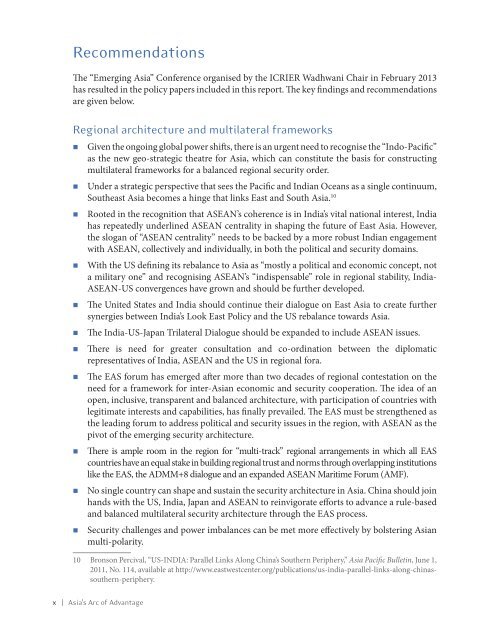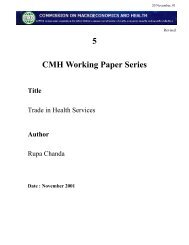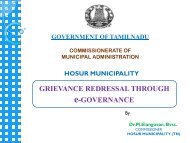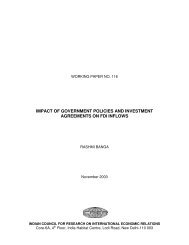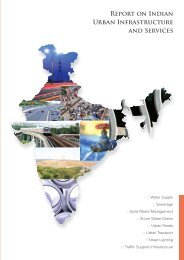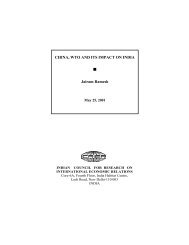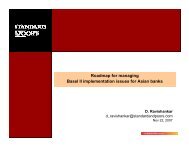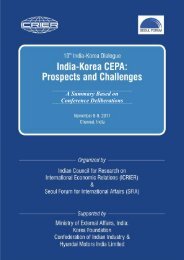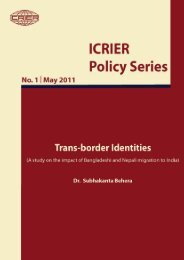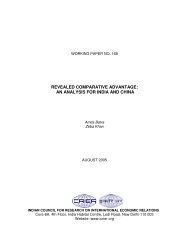Asia's Arc of Advantage - icrier
Asia's Arc of Advantage - icrier
Asia's Arc of Advantage - icrier
Create successful ePaper yourself
Turn your PDF publications into a flip-book with our unique Google optimized e-Paper software.
Recommendations<br />
The “Emerging Asia” Conference organised by the ICRIER Wadhwani Chair in February 2013<br />
has resulted in the policy papers included in this report. The key findings and recommendations<br />
are given below.<br />
Regional architecture and multilateral frameworks<br />
• Given the ongoing global power shifts, there is an urgent need to recognise the “Indo-Pacific”<br />
as the new geo-strategic theatre for Asia, which can constitute the basis for constructing<br />
multilateral frameworks for a balanced regional security order.<br />
• Under a strategic perspective that sees the Pacific and Indian Oceans as a single continuum,<br />
Southeast Asia becomes a hinge that links East and South Asia. 10<br />
• Rooted in the recognition that ASEAN’s coherence is in India’s vital national interest, India<br />
has repeatedly underlined ASEAN centrality in shaping the future <strong>of</strong> East Asia. However,<br />
the slogan <strong>of</strong> “ASEAN centrality” needs to be backed by a more robust Indian engagement<br />
with ASEAN, collectively and individually, in both the political and security domains.<br />
• With the US defining its rebalance to Asia as “mostly a political and economic concept, not<br />
a military one” and recognising ASEAN’s “indispensable” role in regional stability, India-<br />
ASEAN-US convergences have grown and should be further developed.<br />
• The United States and India should continue their dialogue on East Asia to create further<br />
synergies between India’s Look East Policy and the US rebalance towards Asia.<br />
• The India-US-Japan Trilateral Dialogue should be expanded to include ASEAN issues.<br />
• There is need for greater consultation and co-ordination between the diplomatic<br />
representatives <strong>of</strong> India, ASEAN and the US in regional fora.<br />
• The EAS forum has emerged after more than two decades <strong>of</strong> regional contestation on the<br />
need for a framework for inter-Asian economic and security cooperation. The idea <strong>of</strong> an<br />
open, inclusive, transparent and balanced architecture, with participation <strong>of</strong> countries with<br />
legitimate interests and capabilities, has finally prevailed. The EAS must be strengthened as<br />
the leading forum to address political and security issues in the region, with ASEAN as the<br />
pivot <strong>of</strong> the emerging security architecture.<br />
• There is ample room in the region for “multi-track” regional arrangements in which all EAS<br />
countries have an equal stake in building regional trust and norms through overlapping institutions<br />
like the EAS, the ADMM+8 dialogue and an expanded ASEAN Maritime Forum (AMF).<br />
• No single country can shape and sustain the security architecture in Asia. China should join<br />
hands with the US, India, Japan and ASEAN to reinvigorate efforts to advance a rule-based<br />
and balanced multilateral security architecture through the EAS process.<br />
• Security challenges and power imbalances can be met more effectively by bolstering Asian<br />
multi-polarity.<br />
10 Bronson Percival, “US-INDIA: Parallel Links Along China’s Southern Periphery,” Asia Pacific Bulletin, June 1,<br />
2011, No. 114, available at http://www.eastwestcenter.org/publications/us-india-parallel-links-along-chinassouthern-periphery.<br />
x | Asia’s <strong>Arc</strong> <strong>of</strong> <strong>Advantage</strong>


